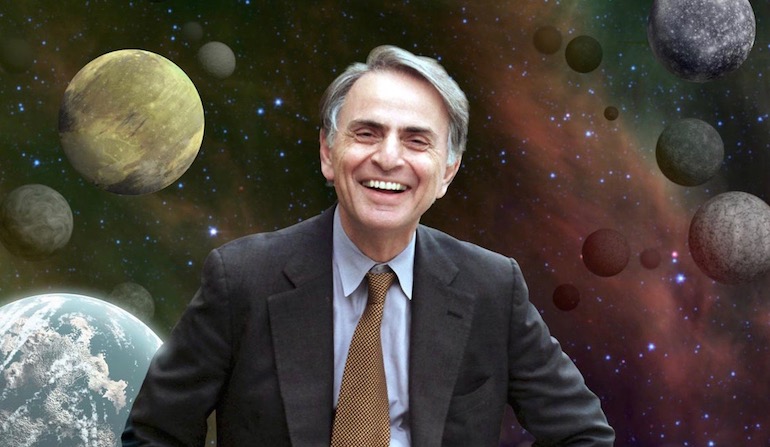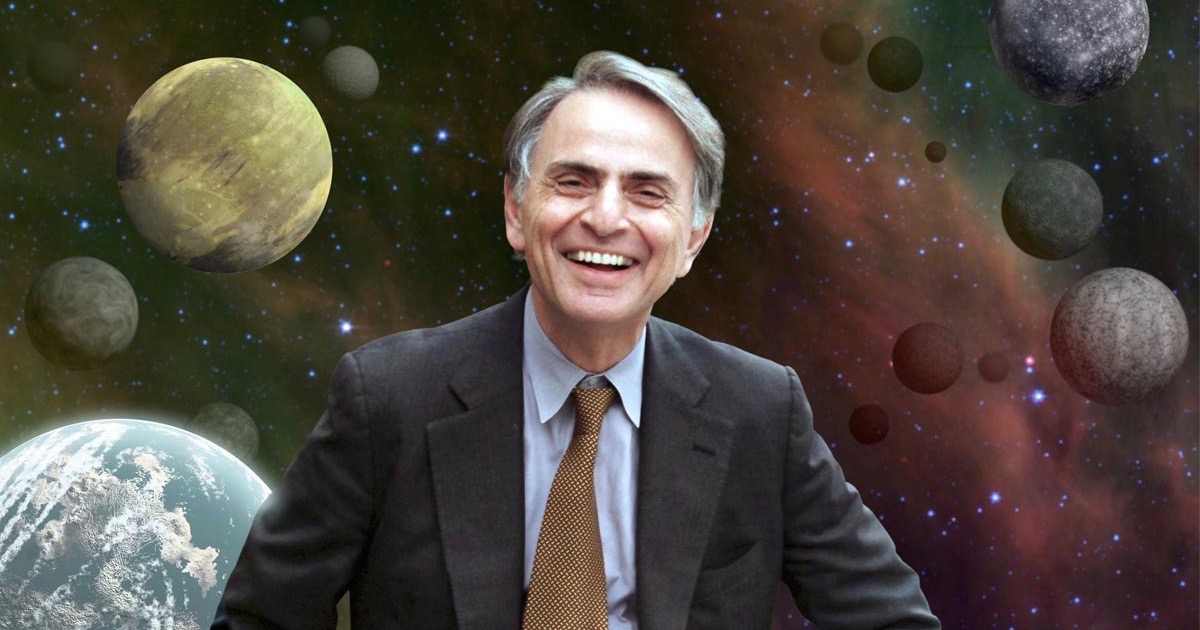 Physics, Earth & Space
Physics, Earth & Space
Cosmos Episode 6 — That’s Entertainment! (But Is It Science?)


Evolution News writers have been reviewing the new, third season of the Cosmos series on the Fox and National Geographic channels. See links at the bottom for coverage of previous episodes. Episode 6 of Cosmos: Possible Worlds released last night, and almost half was devoted to covering the life and work of Carl Sagan, who originated the franchise.
Given that his widow, Ann Druyan, is the executive producer, writer, and director of Cosmos 3.0, it should come as no surprise that Sagan is presented as a kind of free-thinking super-scientist. He is shown working with his mentors, Harold Urey at the University of Chicago and Gerard Kuiper at McDonald Observatory. His work on the Mars Viking mission and the original Cosmos series on PBS catapulted him into stardom. Indeed, Sagan was a gifted communicator and rightly loved for that, but the importance of his scientific research is a bit exaggerated here. There’s no shame in being among the second or third quartile of scientists who’ve managed to work for NASA. On the contrary, that’s an impressive achievement in itself. But Sagan was not a once-in-a-generation Nobel-level titan.
Look at All Those Equations
The show covered one of his more speculative ideas, life in the atmosphere of Jupiter. “Floaters” are giant jelly fish-like creatures filled with hydrogen, like blimps. He also imagined “sinkers,” “hunters,” and “scavengers” and their evolutionary relationships. These creatures interact, forming an entire ecosystem. How this got past the journal reviewers is beyond us. Perhaps all the equations convinced them it was legit science.
Inspired by these speculations, other scientists have proposed life in the clouds of Venus and of brown dwarfs. There are at least a couple problems with these ideas (we won’t call them theories). First, there are no stable solid surfaces on which to concentrate and construct the delicate and information-rich molecules of life (DNA and RNA, in the context of our own planet). Everything mixes with everything else in the chaotic environment of a convective atmosphere. Second, it is unlikely that all the required chemical elements are present in sufficient abundances. Examples include phosphorus and molybdenum. Finally, of all the millions of species of life on Earth, there are none that have a complete life cycle in Earth’s atmosphere. Have you ever seen a hydrogen-filled bladder creature floating by your house?
Let’s Imagine Life on Another World
These examples illustrate one of the problems with the approach taken in each Cosmos series. Whenever Carl Sagan or host Neil deGrasse Tyson speculates about life on a nearby or distant world, keep in mind that all it takes is one assumption to be wrong to bring the whole structure tumbling down. Are all the needed chemical ingredients present in the right abundances and chemical forms in the alien environment? Are interfering chemical reactions accounted for? How is the required biological novelty brought about? That’s the problem with speculative thinking about extraterrestrial life as well as about the origin of life. (For more on the latter, see The Mystery of Life’s Origin: The Continuing Controversy.)
Another let’s-imagine-life-on-another-world scenario in this episode concerns the planets in the Gliese 667 system. It is a triple star system with two K-type dwarfs (667A and B) orbiting each other every 42 years with a distant red dwarf star, 667C, orbiting around them with a much longer period. Tyson says that there are six worlds orbiting the red dwarf. Indeed, this is consistent with findings from 2013. But, only a year later most of the planets were instead shown to be spurious signals related to the star’s rotation. Only two planets survived the new observations. This information has been publicly available to the writers of Cosmos for several years (even assuming they completed work in early 2019). One of the planets, 667Cc, is thought to be within the habitable zone of the red dwarf.
Of course, for the Cosmos writers, being within the habitable zone is enough to trigger their next speculative scenario. Never mind that the planet is a super-earth orbiting a flaring red dwarf in a 3:2 spin-orbit resonance like Mercury and that the two planets’ eccentricities periodically increase to high values. These pose serious challenges to habitability. But, hey, it makes for good entertainment!
Look here for commentary on previous episodes of Cosmos 3.0:
- The Biggest Myth So Far in Cosmos 3.0 — Baruch Spinoza as Science Hero
- New Cosmos Episodes: Only Part of the Story
- Counterprogramming for Cosmos 3.0: Two New Videos from Science Historian Mike Keas
- Cosmos 3.0 Revisits Themes of the Past, with Familiar Historical Mythmaking
- Cosmos 3.0 with Neil deGrasse Tyson Arrives Tonight at 8 PM, Somewhat Dented
Image: Carl Sagan, by NASA/Cosmos Studies.
